Tea is one of the things that the Japanese take seriously. It is so serious that the Japanese people have backyard Japanese tea houses.
The Japanese name for these tea houses is Chashitsu, a place for tea ceremonies.
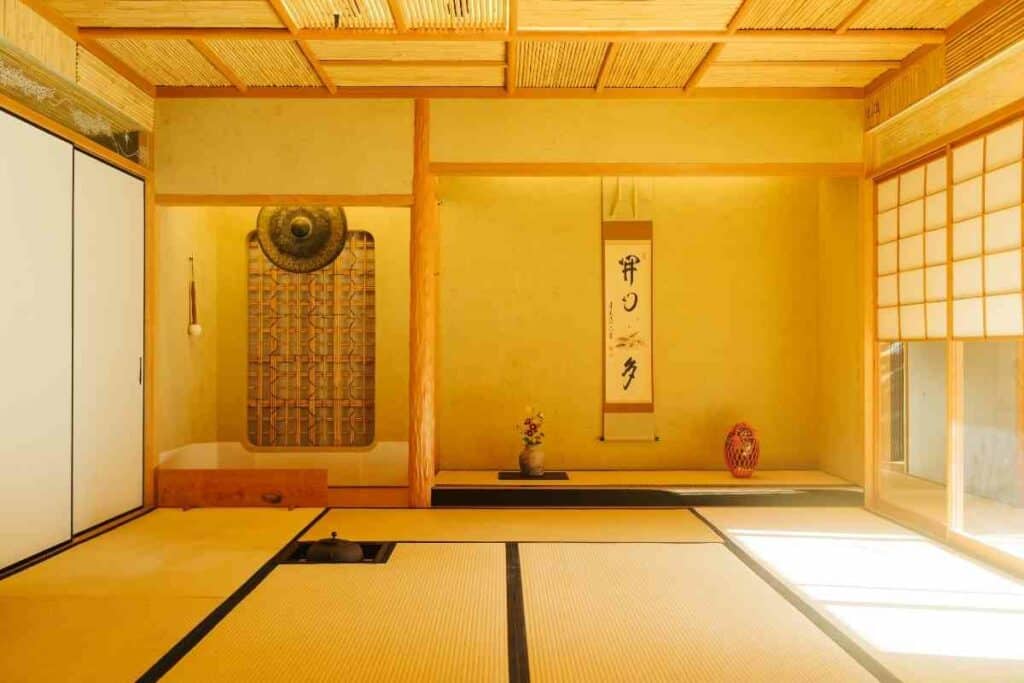
The ceremony involves gathering friends who come and share in the well-made tea.
It is meant to be a relaxing affair, and one should come out feeling calm and with no worries.
You may not live in Japan, but a Japanese tea house is a lovely addition to your backyard.
Think of it as a safe retreat where you can unwind when feeling stressed.
Apart from Taking Tea – You can also use the room for meditation, yoga, or whatever other activity you find relaxing.
So, how do you build a backyard Japanese tea house? Let’s find out.
Table of Contents
Japanese Tea House Architecture
Before embarking on construction, it’s essential to understand the architectural aspects of the tea houses.
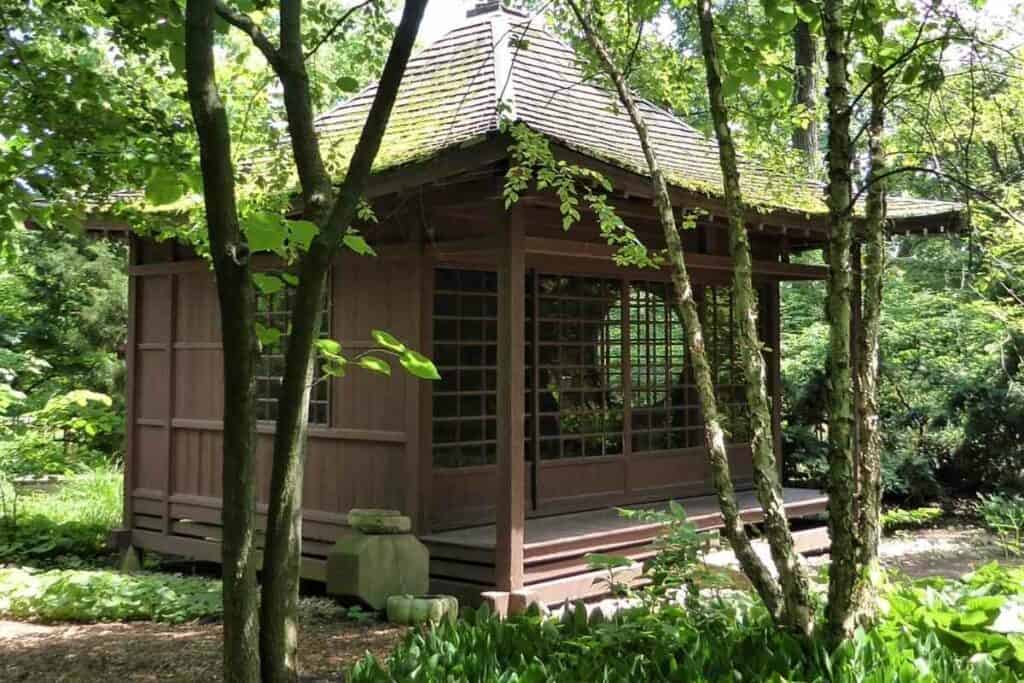
The tea houses are based on Sukiya-Zukuri, a traditional Japanese architectural style.
It’s an elegant style that uses natural materials such as bamboo, wood, straws, and vines.
The Chashitsu has two rooms:
- the kitchen (known as mizuya)
- and the tea room where the guests sit when drinking their tea
All the tea and snacks are prepared and stored in that kitchen.
You will find shoji windows and sliding wooden doors in the tea room.
There are tatami mats on the floor where everyone sits during the tea ceremony.
Booking.comAt the entrance is the tokonoma alcove, a reception area where art, flowers, and paintings are displayed.
The ideal size for a Chashitsu is about 8.2 square meters. That said, the room size is typically determined by the number of tatami mats intended for the floor.
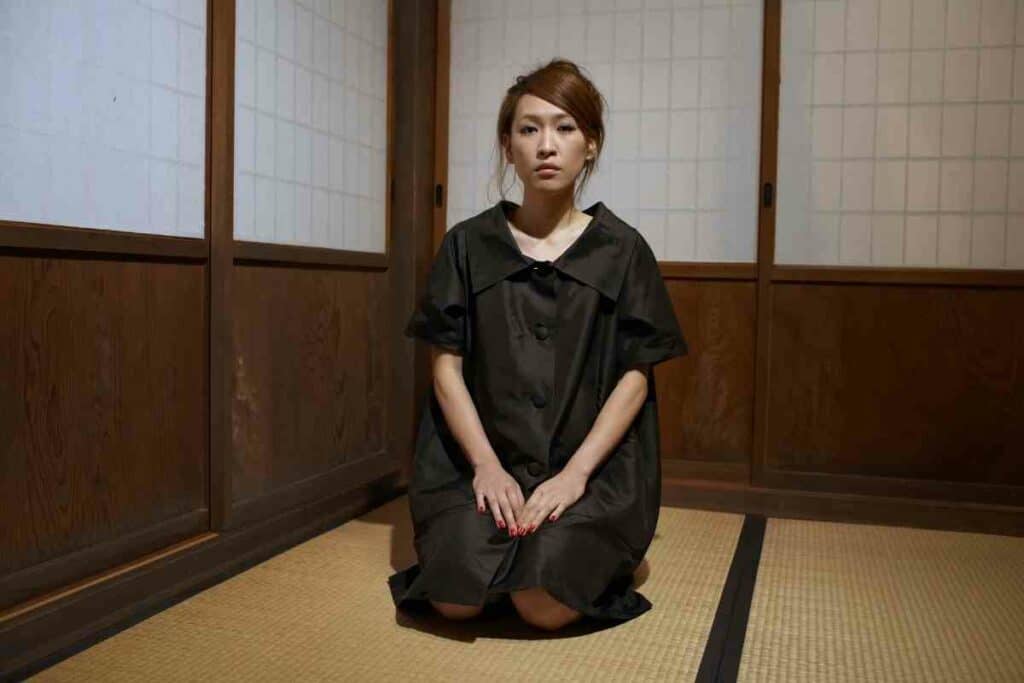
Those constructed for four and a half tatami mats are called ‘Koma,’ while those with more mats are called ‘Hiroma.’
How to Build a Backyard Japanese Tea House in 10 Steps
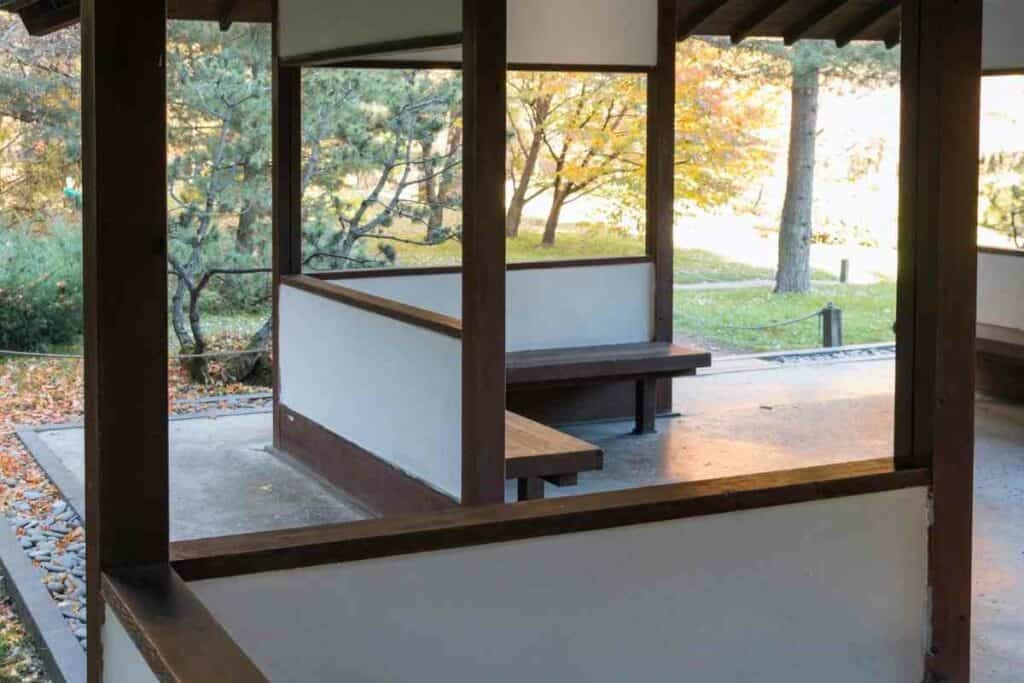
Step 1 – Choosing Your Site
Traditionally, the tea houses were constructed in gardens; hence your site should be in your garden.
Alternatively, you can build it next to some trees. The point is to be one with nature when you’re in the tea house.
You should see your garden or trees when inside the Chashitsu.
In Addition – The tea house should be in a spot where you get good exposure to the sun. This is critical as it is conducive to carrying out your activities.
Step 2 – Building Placement
Once you settle on the perfect spot, you should now think about where it stands.
The best place is usually against a wall because it provides an enclosed feeling.
That said, you can have it standing by itself, but it should be far from the house and other structures around your home.
It should also not be in an exposed space as it would compromise the level of intimacy you need.
Step 3 -Digging the Foundation
While the tea house may be small, it still needs a solid foundation to support it.
You need to dig at least one foot deep for the foundation.
Step 4 – Floor Preparation
Once you’re done digging, you can now lay the materials:
- First, you lay wire mesh in the holes.
- Then, you pour concrete to fill up the gaps.
After that, give it a few days for the concrete to dry completely.
Don’t compromise on the materials used in this phase because it affects your foundation’s strength.
Step 5 – Laying the Floor Boards
To determine the number of floorboards you need for your Japanese tea house, take measurements of your area.
Arrange the boards in a diamond pattern.
Once Done: Use a spirit level to confirm that they are all level. If they are not, make the necessary adjustments.
Step 6 – Installing the Floorboards
Once the boards are well-leveled, you can now nail them down to your foundation.
You need a drill and two-inch galvanized nails for this step.
After all the floorboards are nailed down, cover them with a layer of vinyl flooring.
This type of flooring makes it easier to clean and maintain your tea house.
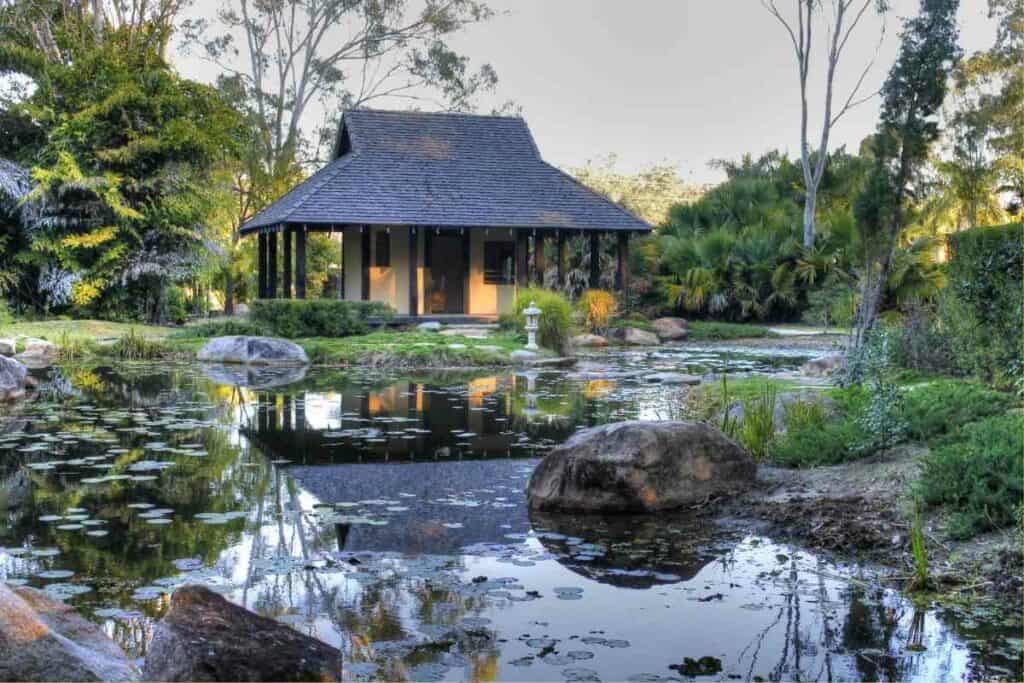
Step 7 – Work On the Roof
You will begin with the roof before the walls of your Japanese tea house.
Start by having a steel base that is strong enough to support your roofing and keep its shape intact.
The steel base should measure precisely the dimensions of the floor.
Lay it out on the floor in a square pattern, then cover it with fiberglass insulation. The fiberglass makes your roof more comfortable to sit on.
After That – Cut the pieces of plywood that you need to fit your roof. Make sure that the frame of the roof is square.
Step 8 – Install the Walls
After the roof is done, you can now work on the walls.
This is the final step of constructing your backyard Japanese tea house.
To start on the walls:
- You first need to measure the internal dimensions of your roof.
- Once you have them, you can now cut the wood needed for all four walls.
- After that, attach the wood to the roof using screws.
- Next, cut the boards to attach to the wood. Fix them to the wall with screws. Use a spirit level to assess whether they are level.
- After that, you can choose to leave your tea house open or install screened windows.
Step 9 – Furnishing Your Japanese Tea House
Unless you want to have your tea house look exactly like those of the Japanese, you can furnish your tea house.
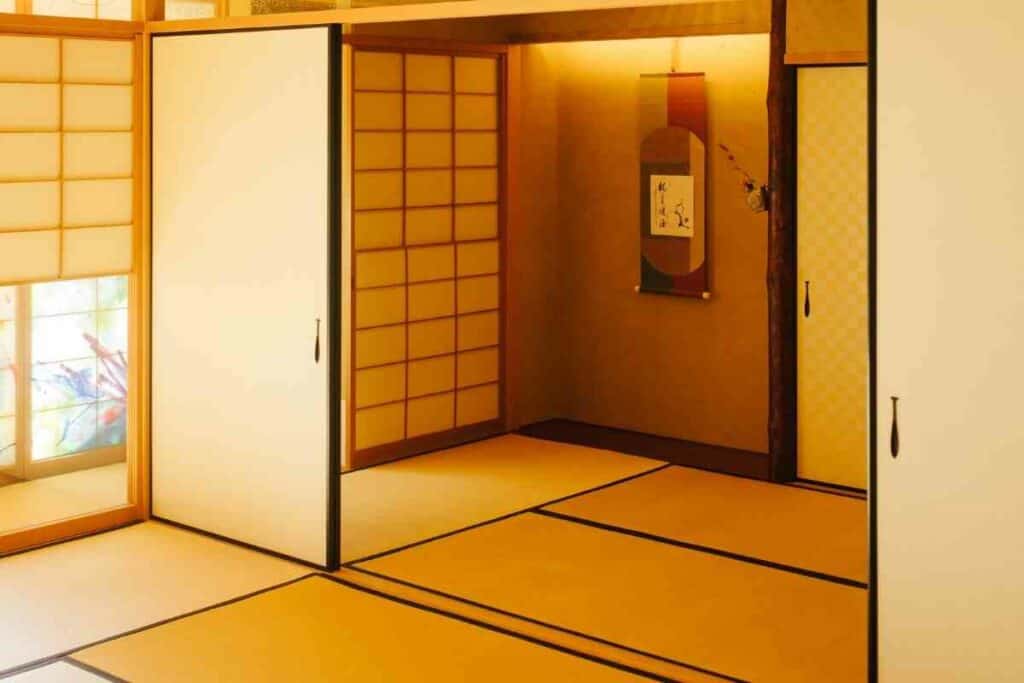
It is best to have simple outdoor furniture. You can also have throw pillows to sit on as you sip your tea.
Step 10 – Décor Choices for Your Tea House
Simple décor is best for this space. If you have access to bamboo sticks, put them in a vase.
Throw in a variety of potted flowers to liven up the place.
Wall hangings will add character to your room, so make sure to include simple ones.
The colors you choose for the walls should be subtle for a tranquil space. To achieve this, go for neutral colors.
How to Perform a Japanese Tea Ceremony
After successfully setting up your backyard Japanese tea house, you may want to try out a proper tea ceremony.
Here is how to go about it.
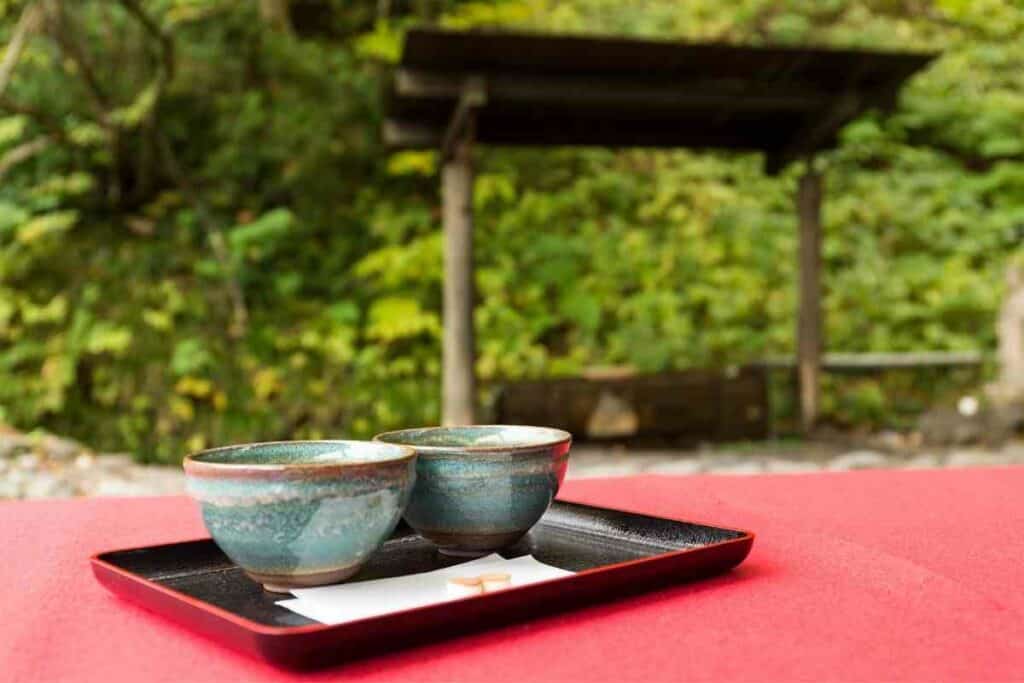
Invitations
Send out formal invitations to your guests a few weeks in advance.
This gives them time to familiarize themselves with this culture if they haven’t heard about it.
Preparation
Before the actual day, select the utensils and décor you will use for the ceremony.
Also, get some sweets to welcome your guests.
Ensure your tea house is clean and well-arranged on the ceremony day. Arrange some fresh flowers to make it smell good.
The guests should also prepare themselves by washing their hands outside the tea room. Handwashing is a symbol of purification.
Receiving Your Guests
You can now invite the guests into the tea room when you’re all set.
They will enter through the small door going towards the tea room. The entry is small, so the guests have to bow, which shows their humility.
You welcome the guests one by one, handing them some sweets.
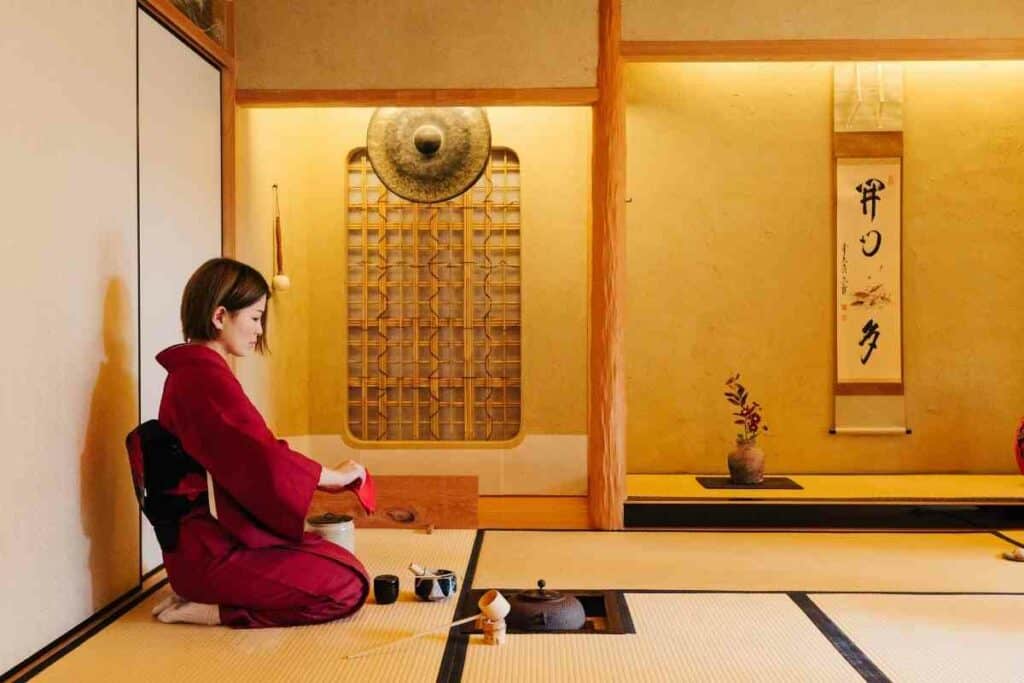
The guests then sit according to their experience in tea ceremonies. You will serve them the tea in this arrangement.
Purifying Your Tools
As the host, you should start by purifying your utensils by wiping them with a silk cloth and warming up the tea bowl with hot water.
This step is not for cleaning the tools since you have previously cleaned them. Instead, it represents the purifying of your guests’ souls.
Serving the Tea
Traditionally, two teas are served at the tea ceremony; thick matcha and thin matcha.
The thick matcha is served first, then they finish with the thin one.
Usually – The principal guest is served first, then the rest of the guests. The cycle continues until each tea type is over.
If you cannot access traditional teas, you can use other teas available to you, such as green tea.
Cleaning Your Tools
After the tea is over, you should then clean the tools used.
Then, give the clean tea bowl to your principal guest to admire it. They then pass the bowl to other guests who take their turn with it.
Guest Departure
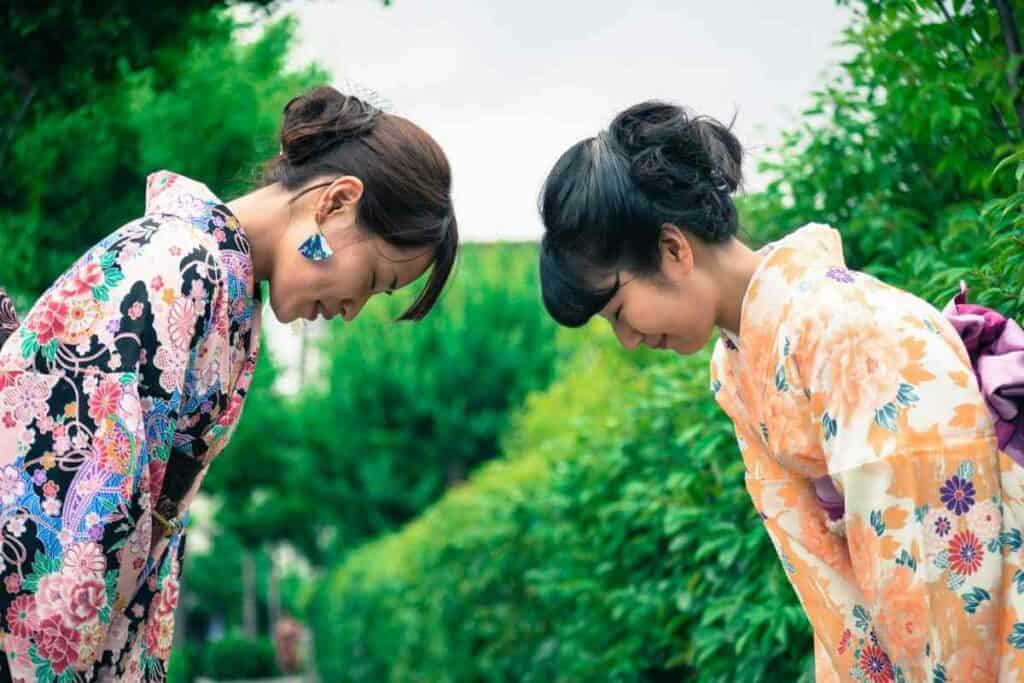
At the end of the ceremony, you should show your guests out, bowing to each.
As a custom, your guest should contact you the next day, thanking you for your hospitality.
Conclusion
A backyard Japanese tea house gives you a space to enjoy nature and destress.
As seen above, constructing it is pretty straightforward.
Make it simple and minimalistic, just as the traditional rooms. Being there should have you feeling relaxed, not constrained.
Do not forget to invite your friends for a tea ceremony.
This gives them a feel of the Japanese culture. Of course, you can choose to have a different party there.
Just make sure they come out of the party happier and more peaceful.
You Might Also Like
- 12 Things Tourists Should NEVER Say in Japan
- Kissing Robot: Exploring the Popularity of the Chinese Kissing App
- Unlocking the Secret Dating Rituals Only Locals Know in Japan
- Samurai Armor: Ancient Protection for Japan’s Elite Warriors
- 10 Amazing Facts About Schools in Japan: Unique Traditions and Educational Practices
- Where can you see snow monkeys in Japan: Best locations and viewing tips









